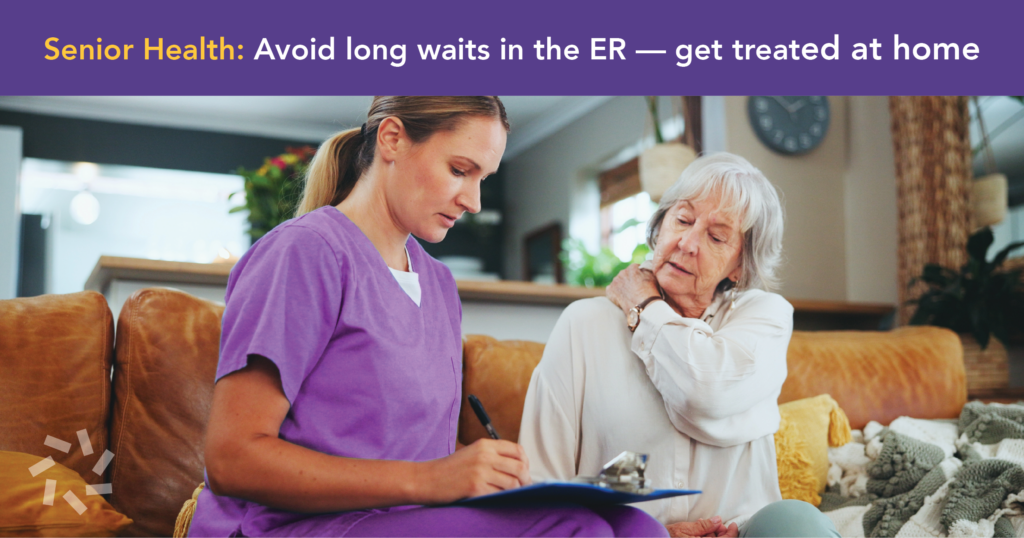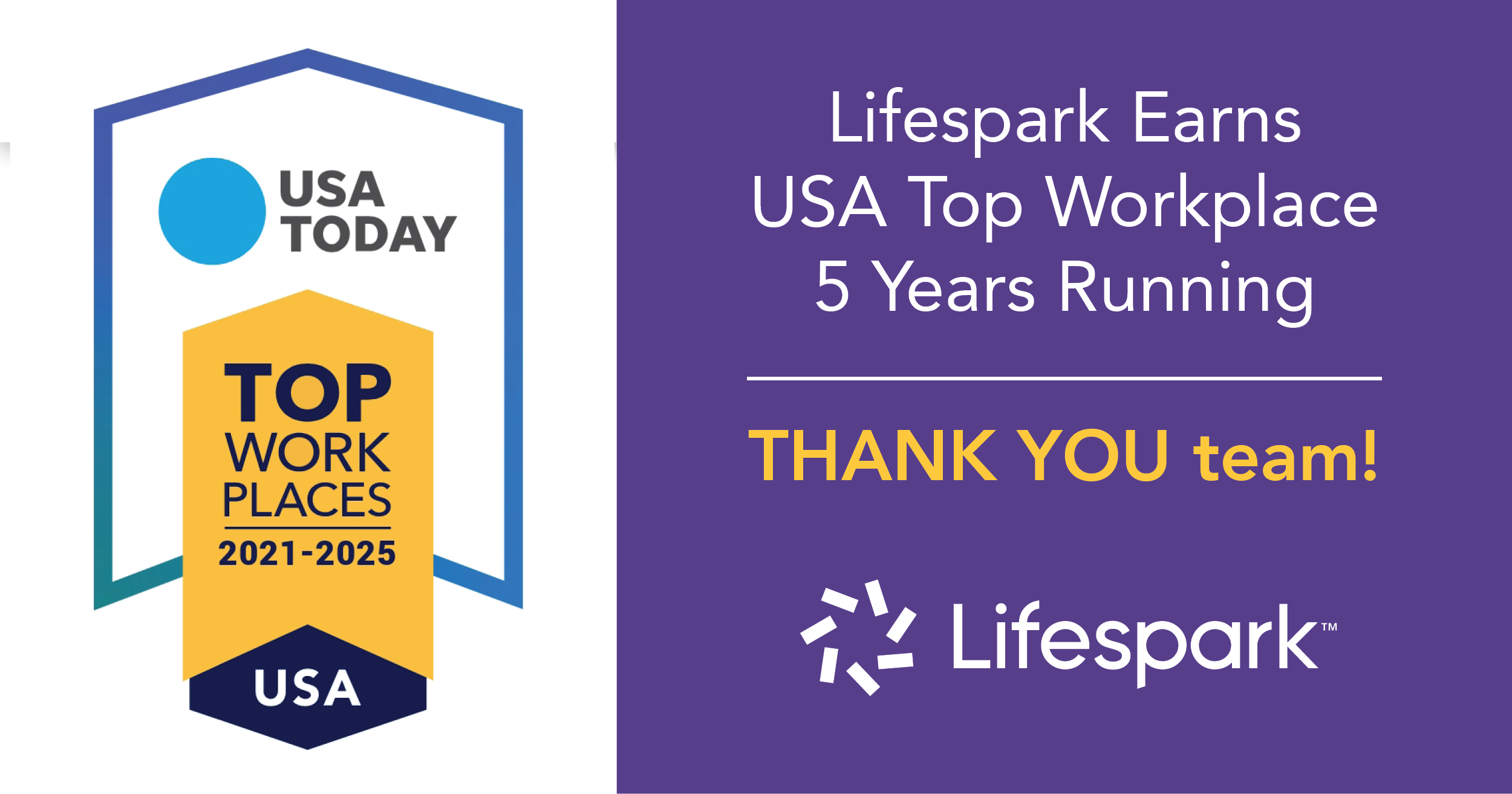
One Sunday morning in early August, Irene woke up with a badly swollen knee. She thought about waiting until Monday to call her Lifespark Nurse Practitioner but was afraid that bacteria from an infected tooth had migrated to her artificial knee joint, something her orthopedic surgeon had warned her about. If left untreated, an infected joint could require additional surgeries, which is why she had taken prophylactic antibiotics before and after a recent dental procedure.
The last thing Irene, 74, wanted was another surgery, but based on previous emergency room visits, she dreaded the thought of going to the ER. “You’re sitting for hours next to people who are sick with the flu or COVID, when you’re already not feeling well yourself,” she said. “The doctors are regular GPs [general practitioners] so they’d probably just run some tests and send me home with antibiotics, which I’m already taking.” She was also concerned about the $100 co-pay, adding that she lives in low-income housing and has limited financial resources.
Instead, Irene called Urgent Response Services, Lifespark’s 24-hour nurse triage line.
Convenient, efficient, and trusted
As a member of Lifespark COMPLETE (LSC), Irene qualified for Urgent Response Services which provides acute-level care for members in their homes. Within minutes, Leah Castle, RN, BSN, Mobile Urgent Responder, was on her way, getting briefed by the triage nurse on Irene’s concerns.
Once at Irene’s home, Leah logged onto the secure portal to access key client information, including Irene’s health history, medications, allergies, support system, financial considerations, contingency plans, and goals of care. “Having this level of detail at our fingertips helps us make more accurate, more efficient assessments,” she said. “It also gives us a more complete picture of the member, so we can offer recommendations that align with their goals and lifestyle.”
After taking Irene’s vitals, she drew some blood, took a photo of the worrisome knee, and talked through her findings with the on-call provider. They were both confident that it wasn’t a bacterial infection but would wait for the lab results for confirmation. Leah sent a note to Irene’s COMPLETE team to schedule a follow-up for the next week. In the meantime, Irene was to continue the antibiotics, take a Tylenol every six hours, ice her knee, and keep the leg elevated as much as possible.
Leah dropped off the blood samples at the hospital lab for processing, and in less than two hours, the on-call physician had the results. Leah called Irene to let her know that the labs were negative for systemic infection and that her inflammatory markers were within normal range.
Irene was relieved. “This was so much better than going to the ER,” she said.
Rule-outs and rule-ins
In Leah’s experience, older adults often go to the ER to make sure there’s nothing seriously wrong. In fact, studies show that roughly 32% of hospital ER visits are non-urgent and unnecessary. As a Mobile Urgent Responder, she’s able to rule out those non-emergencies, efficiently and effectively, from the person’s home.
“That was the case with Irene: she’s had both knees replaced and was very concerned that she’d need more surgery,” Leah said. “We were able to put her at ease and assure her that we would continue to monitor and manage her symptoms from home.” If there is something to be concerned about, Leah added, the Mobile Urgent Response team is able rule in the need for emergency care.
Building on career experience
Having the confidence to make quick, accurate assessments and communicate them to Lifespark’s medical experts comes from her diverse career background. One of Leah’s first nursing jobs was on a cardiac step-down unit, a fast-paced, intense environment where the nurses were constantly working with different physicians and therapists. “I learned how to quickly build trusting relationships with the providers and also with families during some of the darkest moments of their lives,” she said.
Leah said she grew professionally in that environment, gaining skills and knowledge that prepared her for her next job, at a long-term acute care hospital. The individuals she cared for had complex diagnoses and illnesses, such as extensive wounds, traumatic brain injury, chronic kidney disease, and respiratory failure. “Patients were here for two to six months or more, many of them on ventilators and feeding tubes, so I got to know their families and learned how to support them, too,” she said.
In 2017, Leah joined Lifespark Community Home Care as their first on-call nurse. “Coming into the Home Care setting with my background was powerful, because I knew what my clients had just walked out of, whether that was the hospital or rehab, and now I could help them stay healthy at home,” she said.
Seven years later, she was recruited for Lifespark’s Mobile Urgent Response team. “I feel like each step in my career has prepared me for the next one, and now, as a Mobile Urgent Responder, I can be the eyes and ears of our providers in the home,” she said. “I can also bring care and compassion and empathy to our members, so they feel confident in the care we’re providing.”
Benefits of early intervention
The Mobile Urgent Response team has been most successful when members call the triage line before their symptoms progress to a critical level. The team has been able to treat early symptoms of congestive heart failure (CHF) and chronic obstructive pulmonary disease (COPD) in the home, often with a short-term medication adjustment. However, if a CHF or COPD exacerbation isn’t treated, the client would likely need to be hospitalized for IV therapy and increased respiratory support.
Recently, Leah collaborated with the on-call provider to diagnose a painful ear infection that had developed quickly. The physician faxed a prescription for antibiotics to the client’s pharmacy which they were able to pick up and start taking that same day.
“It’s really fulfilling and rewarding to be able to offer this service to our members and their families who want to be supportive but can’t always be there in person,” Leah said. “They’re in good hands with Lifespark.”
To learn how Lifespark helps seniors stay healthy at home, visit Lifespark.com or call 952-345-8770.



